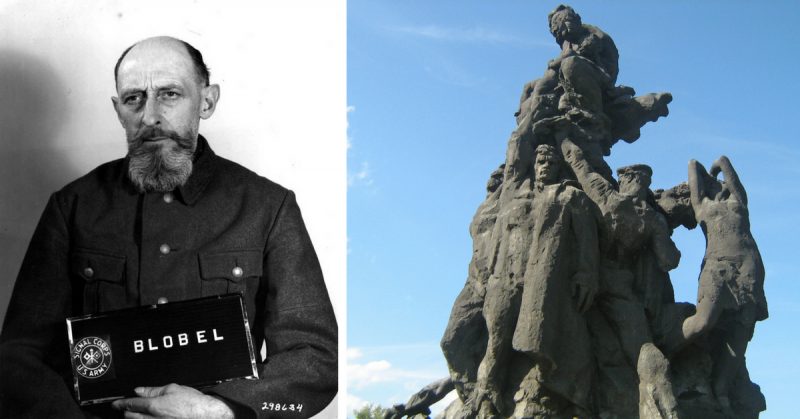On September 29, 1941, the streets of occupied Kiev were filled with thousands of women, old people and children carrying valuable things. According to the order of the German command, all Jews living in the city had to move to a new place to live.
A little earlier, the Sonderkommando ordered nine leading rabbis of the city of Kiev to tell all the other Jews that:
«After sanitation, all Jews and their children, like an elite nation, will be transported to safe places …»
In order to avoid panic and insubordination, the Germans used their favorite method of disinformation. Commander of the SS’s Einsatzgruppen, Mark Thomas, sent a report to Berlin:
«Although initially, it was possible to count on the turnout of about 5,000-6,000 Jews, but there were more than 30,000 Jews, because of an unusually qualified organization, especially since they believed that they would be transferred to another place, until the execution»
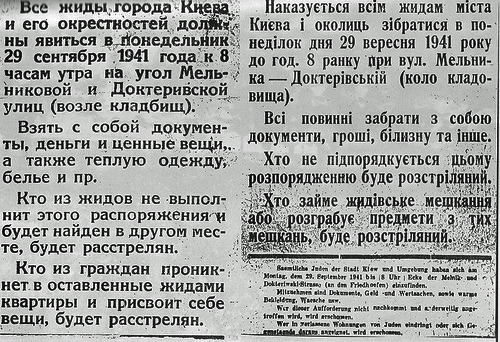
The place for conducting mass executions was chosen not by chance. Babi Yar was chosen due to a large number of natural moats and ravines, which saved the time and energy of the German executioners. In addition, this plot is located outside the city. No one within the area could see and hear the noise of shots and screams.
The main initiators who launched the “murder machine” were the Military Commandant of Kiev Kurt Eberhard, the Chief of the Einsatzgruppen Paul Blobel, and the Commissioner-General of Kiev Helmut Kvitzrau and the commander of the Einsatzgruppen “S” Otto Rush.
The process of the conveyor of death began on September 29. However, the first shooting occurred on September 27, 1941. On this day, the Germans shot 752 patients at the psychiatric hospital. This hospital was located near the ravine. The exact place of execution is unknown.
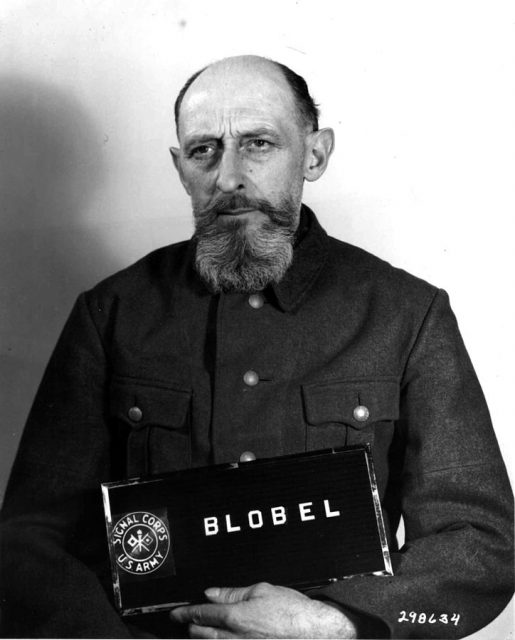
Brotherly Grave Instead of a New House
After passing the cordon to Babi Yar, the captives gave all their belongings to the Germans. Then the German soldiers took them to the ravines where the firing squads waited for them. The murder was conducted according to a proven system of the Einsatzgruppen. The first to be killed were always the physically strongest people (men, older boys). After them, they killed women, old people, small children and sick people. This was done so that the victims could not unite and resist.
The participants in the murder were divided into groups, each of which had direct functions. One group guarded the victims of the execution. Participants in the second group brought victims to the place of execution and laid them on the ground.
Soldiers of the third group shot and soldiers of the fourth group brought cartridges. Others were engaged in sorting clothes and valuables. Another group was responsible for the food of the executioners and the staff. In addition, there were those who rested or took away the belongings of the dead to the city storehouse.

In total, the warehouse managed to load more than 130 trucks with personal belongings of the victims. Most of these things were distributed. The most valuable things were sent to Germany. Items of worse quality were left to the SS hospital and for Volksdeutsche.
150 people worked in usison. They were divided into several execution groups throughout the area of Babi Yar. The victims were forcibly led to the edge of the ravine and ordered to lie with their faces down. If they refused, they were shot immediately. Once the prisoners were prone, soldiers from the shooting groups shot the victims in the back of the head. The corpses of the victims were stacked on top of each other.
On the first day, executions were conducted from early morning until 18:00 pm. On this day, about 21-22 thousand people were shot. Immediately after this, the German executioners celebrated this event with schnapps. On the second day, about 11-12 thousand people were shot.
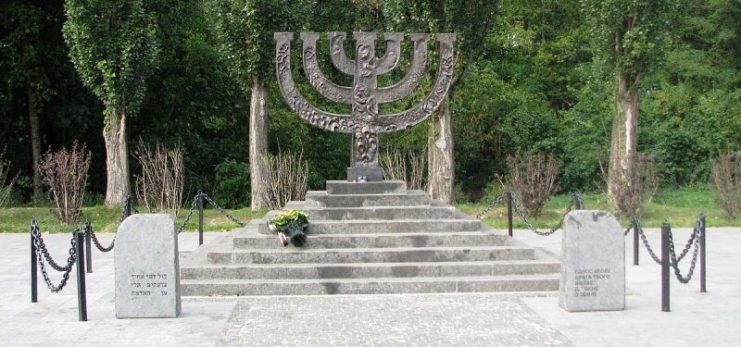
Each German shooter had a man bringing cartridges. Every 15 minutes the shooting soldiers replaced each other. There are cases when officers refused to take part in executions. They were limited only to staying in the cordon. However, the refusal to participate did not lead to any consequences. From this, it can be concluded that the officers’ participation was voluntary.
The testimony of one of the executioners – Kurt Werner:
«Immediately after my arrival at the place of execution, along with other comrades, I had to go down to this ravine… It did not last long, and soon the first Jews were brought to us along the slopes of the ravine.” The Jews had to lie face to face at the sides of the ravine. The ravine included three groups of shooters, about 12 shooters. To these groups, at the same time, Jews were always sent from above, while the subsequent Jews had to lie down on the bodies of those previously shot. The other shooters were behind the Jews and killed them with shots in the back of the head. I still remember today, how terrible the Jews came when they could look down at the corpses in the ravine for the first time from the edge of the ravine, many of them screaming all the time, it’s impossible to imagine what nerves it cost to do dirty work under these conditions.»
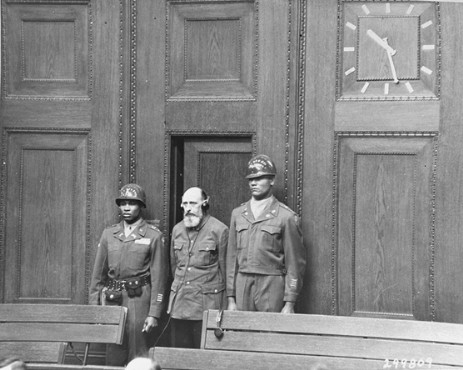
The scale of the tragedy
Description of the actions of the staff member of the Einsatzgruppen “С” Hartl in testimony at the trial:
«Blobel laughed and, pointing his hand at Babi Yar, said:” Here are my 30,000 Jews. »
However, while in captivity with the Soviet troops, he denied this figure in interrogations. He claimed that this number was not true and was double the actual figure. Unfortunately, not all of the participants in this atrocity were punished.
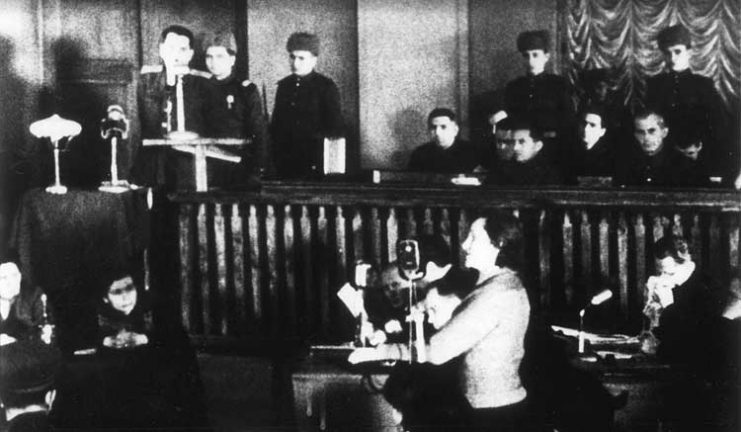
It is also worth noting that the Nazis shot people in Babi Yar for about two years. In addition to the Jews, executions of Soviet prisoners of war, Gypsies, underground communists, Ukrainian nationalists from the Melnikov faction and patients of psychiatric hospitals were carried out there.
At the present time, it is impossible to name the exact figure of those killed in Babi Yar. Different sources show conflicting information ranging from 40 to 200 thousand victims.
For a long time, the Soviet authorities paid little attention to the tragedy in Babi Yar. On September 29, 1966 after a spontaneous mass rally with the participation of famous dissidents, Ivan Dzyuba and Viktor Nekrasov the tragedy began to be discussed at the state level. Only in 1991, was a monument placed at the site – a bronze menorah. Other victims of the Nazis also received a monument.
